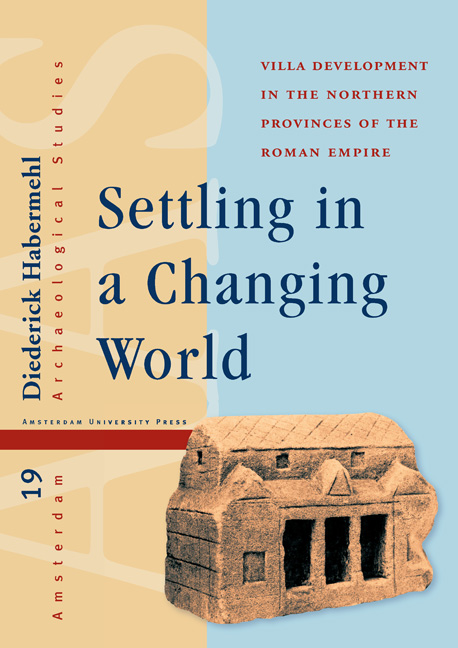Book contents
- Frontmatter
- Dedication
- Contents
- Preface
- 1 Introduction
- 2 Data and Research
- 3 Exploring Villa Development
- 4 Exploring the Social Villa. A Human Approach to Villa Development
- 5 Villa Development and the Organisation of Production
- 6 Settling in a Changing World: A Synthesis
- References
- Appendix 1 Site Catalogue
2 - Data and Research
Published online by Cambridge University Press: 11 December 2020
- Frontmatter
- Dedication
- Contents
- Preface
- 1 Introduction
- 2 Data and Research
- 3 Exploring Villa Development
- 4 Exploring the Social Villa. A Human Approach to Villa Development
- 5 Villa Development and the Organisation of Production
- 6 Settling in a Changing World: A Synthesis
- References
- Appendix 1 Site Catalogue
Summary
This chapter will introduce and explore the very essence of this study – the dataset. There are two key themes. Firstly, the choices about the composition of the dataset are made explicit. What sites and data are included in the inventory and what is the rationale behind this? Secondly, the characteristics and biases of the dataset are explored to assess how they influence the results of the analyses.
Unlike most studies, which focus on individual sites or specific regions, this dataset includes settlement data from a variety of regions, covering no less than four modern-day countries and a variety of research traditions, spread across both space and time. This has generated a highly heterogeneous dataset whose backgrounds, characteristics and biases need to be explored before a start can be made on analysing the data.
Firstly, I will discuss the conceptual basis on which the dataset is built – in other words, the choices that are made. I will then explore the differentiated research background of the dataset by looking at the different research volumes through time, the scale of research and also discuss a number of important research traditions. Next, I will define and briefly discuss five subregions, bringing some structure to the dataset. Lastly, I will set the dataset against the main objectives of this study – exploring developments in settlement organisation, house building and their regional differentiation.
CONSTRUCTING A DATASET
Constructing a dataset is always subject to choices relating to the objectives of the study in question. Before working with the dataset, I therefore need to make these choices explicit. As outlined in the previous chapter, the main objective of the present study is to reconstruct and analyse villa development. This requires the availability of quality archaeological data, including detailed information on morphology (structure, form and material of the built environment) and chronology (a fairly detailed phasing of the development of houses and settlements; absolute and relative dating). In other words, only well-excavated and well-published sites can satisfy this study's objectives. Overall, I could say that the availability of a well-documented house plan, preferably well-dated and adequately phased, is the minimum requirement. Ideally, data on the broader settlement context and longer-term developments should also be available. Survey data is therefore not included in the dataset. Publication is a related requirement, which generally means that only published sites have been included.
- Type
- Chapter
- Information
- Settling in a Changing WorldVilla Development in the Northern Provinces of the Roman Empire, pp. 17 - 24Publisher: Amsterdam University PressPrint publication year: 2013



